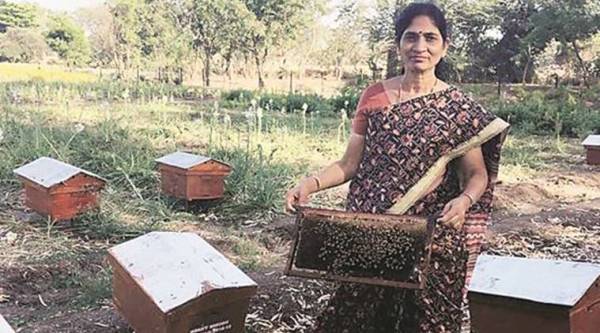
It took four years for Lakshmi Rao to travel across the country to understand the favourite flowers of Indian honeybees, their seasonal choices of plants and trees and trace their migratory paths based on crops and regions. Her aim — to compile an encyclopaedia on bees and their habitats.
Rao, an assistant director at the city-based Central Bee Research and Training Institute (CBRTI), recently developed the country’s first-ever floral calendar of Indian honeybees. She wants to help future generations of farmers and bee-keepers with a reference on the nature of these nectar-gathering winged species, who can then have enough pollen and nectar from flowers to feed on.
Having visited many jungles, farms, fields, plantations and estates in India as part of her doctoral studies, Rao was selected by the Department of Science and Technology (DST) in 2013 for this project. The end product — a calendar comprising every detail mentioning the type of bee, its preferred flower or plant variant grown in a specific district for both the kharif and rabi seasons of every Indian.
“It was a massive exercise and needed knowledge of apiary, botany, horticulture, geography and weather all combined together while undertaking field studies,” said Rao, who will begin the final leg of this project and complete field work in Uttar Pradesh and the north-east in the coming months. Till this calendar, there was no collated information of this kind, Rao said. “Now, we can suggest specific locations to farmers and bee-keepers where the bee colonies need to be placed for effective nectar and pollen gathering. This is like a focused effort towards naturally allowing bees to thrive in a locality with supportive vegetation,” she said.
Challenges were many but Rao was unfazed when she got little support on this project. After touring the country, she compiled up to 7,000 classified information sets per state.
However, Rao said she could have done with a little more help. “Though two positions of research fellows were allotted in the project, they were never hired,” she said.
Rao is concerned about the fast-changing farming and types of crops under cultivation, all of which are additional challenges for the survival of bees and which could eventually affect honey production.
She recalls seeing long stretches of sunflower cultivation in Punjab, which was a hotbed for bees, until a few years ago. Similarly, the aromatic and tall Eucalyptus trees, too, have lost their sheen. “The hybrid sunflower cultivate now only produces large-sized flowers but has poor nectar secretion ability. So it cannot attract bees. There is no flowering observed in cloned-variants of Eucalyptus trees, as farmers are now extracting oil and pulp meant for the paper industry,” said Rao.